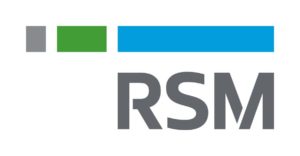$60.5M renovation project at Port of San Juan to improve future energy costs

The US Army Corps of Engineers and the Puerto Rico Ports Authority will begin laying the groundwork later this year for improved maritime infrastructure at the San Juan Harbor that will eventually help lower energy costs and better the area’s environmental quality.
In an interview with News is my Business, Ports Authority Executive Director Joel Pizá said the $60.5 million project — for which the agency is contributing $15 million — includes several key phases that will improve the depth and breadth of the different areas of the harbor.
One of the most important aspects, he said, is the work to be done to the Army Terminal Channel, which is used by cargo ships bringing in natural gas and other fuel to docks in San Juan and Cataño. That channel will be dredged from 40 feet deep to 44 feet deep, opening the way for larger cargo ships.
“Once that’s completed, we’ll be able to receive larger barges carrying natural gas, which cannot make it into the San Juan Harbor today. Having larger ships coming in means greater volume and better prices,” he said.
Pizá said an aspect that weighed heavily on the feasibility study conducted by the US Army Corps of Engineers to determine if the federal government would get involved in the project was being able to eventually lower the cost of electricity in Puerto Rico.
This project began taking shape in September 2006, when House Resolution 2764 was submitted to the Committee on Transportation and Infrastructure. The proposal authorized the Secretary of the Army “to determine the feasibility of providing navigation improvements at San Juan Harbor, Puerto Rico to increase security, safety and efficiency.”
While the USACE is the lead agency, contributing about $45.5 million, the Puerto Rico Ports Authority is the non-federal sponsor that is putting up the other $15 million, for the project that has taken 16 years to get off the ground.
Pizá said the final approval and funding was expedited by the passing of the Infrastructure Investment and Jobs Act in Congress.
“As the cargo transportation industry continues to shift to larger, more efficient petroleum tankers and larger cruise ships to meet increased passenger transportation needs, the vessel fleet is trending toward larger, deeper-draft vessels, particularly for gasoline, jet fuel, diesel, liquefied petroleum gas (LPG) products, and liquefied natural gas (LNG),” the USACE stated in its executive summary of the project.
Among other things, the body said the Army Terminal Channel’s current depth constraints and restrictive widths “require vessel operators to forego potential transportation cost savings available from the economies of scale associated with existing and larger ships drafting deeper.”
The current circumstances of the bay area also affect cruise ship traffic, as they are dealing with maneuverability issues that increase their transit time in the harbor. It also restricts larger ships from docking in San Juan.
“That creates environmental problems, because the longer it takes for the ships to maneuver, they use up more diesel and generate more toxic emissions,” said Pizá, who added that quicker transit times also mean an increase in the number and size of ships visiting San Juan.
“Ports generates between $5,000 and $10,000 per cruise ship that stops here, depending on their weight, so this is another benefit for the agency,” he said.
The project will happen in five phases starting in October 2022 and should take about 18 months to complete, Pizá said. The USACE will award the contracts to the firms involved in completing the different tasks and will oversee the arrival of the equipment and machinery needed, which does not exist in Puerto Rico.
The work should not affect maritime traffic in the San Juan Harbor, Pizá confirmed.
After the dredging work is completed, the USACE will contract companies to perform maintenance work every five years, Pizá said.









